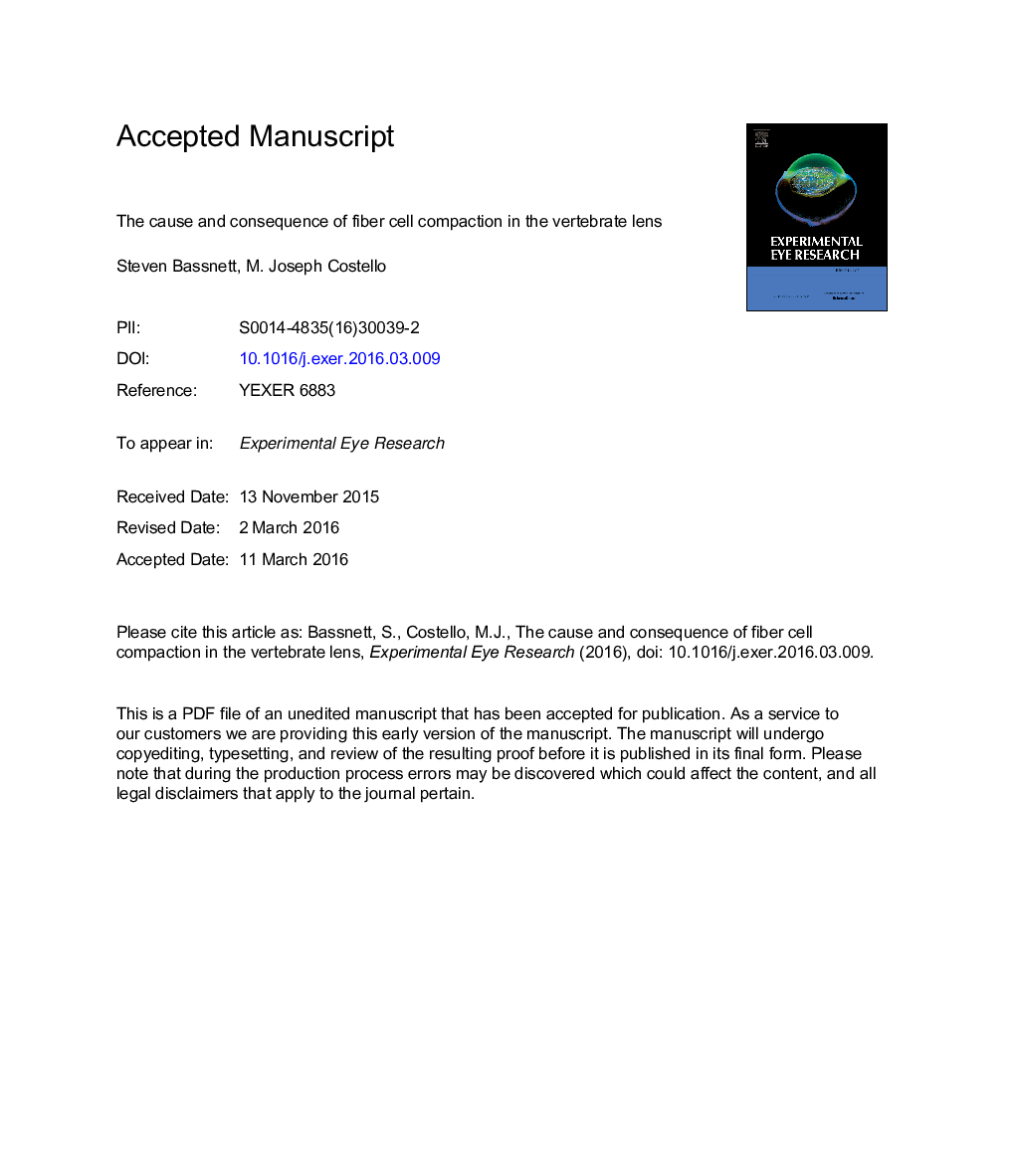| کد مقاله | کد نشریه | سال انتشار | مقاله انگلیسی | نسخه تمام متن |
|---|---|---|---|---|
| 5704156 | 1602566 | 2017 | 27 صفحه PDF | دانلود رایگان |
عنوان انگلیسی مقاله ISI
The cause and consequence of fiber cell compaction in the vertebrate lens
ترجمه فارسی عنوان
علت و نتیجه تراکم سلول های فیبر در لنز مهره ها
دانلود مقاله + سفارش ترجمه
دانلود مقاله ISI انگلیسی
رایگان برای ایرانیان
کلمات کلیدی
لنز تراکم کنترل حجم، ضریب شکست، گرین، کریستالین، فشار انکواتیک،
موضوعات مرتبط
علوم زیستی و بیوفناوری
ایمنی شناسی و میکروب شناسی
ایمونولوژی و میکروب شناسی (عمومی)
چکیده انگلیسی
Fiber cells of the ocular lens are arranged in a series of concentric shells. New growth shells are added continuously to the lens surface and, as a consequence, the preexisting shells are buried. To focus light, the refractive index of the lens cytoplasm must exceed that of the surrounding aqueous and vitreous humors, and to that end, lens cells synthesize high concentrations of soluble proteins, the crystallins. To correct for spherical aberration, it is necessary that the crystallin concentration varies from shell-to-shell, such that cellular protein content is greatest in the center of the lens. The radial variation in protein content underlies the critical gradient index (GRIN) structure of the lens. Only the outermost shells of lens fibers contain the cellular machinery necessary for protein synthesis. It is likely, therefore, that the GRIN (which spans the synthetically inactive, organelle-free zone of the lens) does not result from increased levels of protein synthesis in the core of the lens but is instead generated through loss of volume by inner fiber cells. Because volume is lost primarily in the form of cell water, the residual proteins in the central lens fibers can be concentrated to levels of >500Â mg/ml. In this short review, we describe the process of fiber cell compaction, its relationship to lens growth and GRIN formation, and offer some thoughts on the likely nature of the underlying mechanism.
ناشر
Database: Elsevier - ScienceDirect (ساینس دایرکت)
Journal: Experimental Eye Research - Volume 156, March 2017, Pages 50-57
Journal: Experimental Eye Research - Volume 156, March 2017, Pages 50-57
نویسندگان
Steven Bassnett, M. Joseph Costello,
